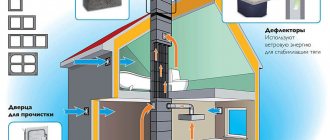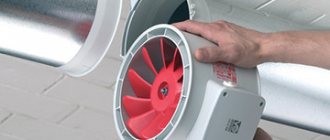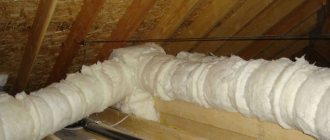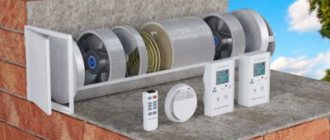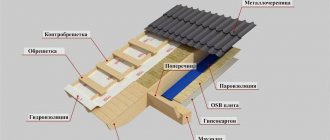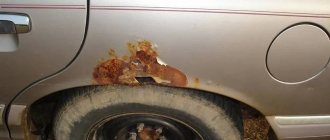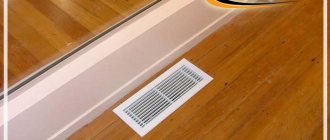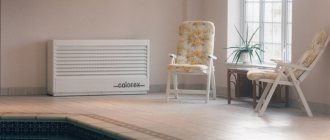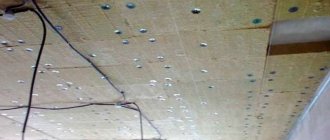When designing kitchen ventilation, the main task that the ventilation project solves is the removal of odors and technological emissions from prepared food. And preventing odors from entering the dining room. The main equipment that dictates the design of ventilation in a hot shop is an exhaust hood. The correct calculation of the volume of the hood in the ventilation project will ultimately determine how comfortable it will be in the dining room, in the hot shop and in the service areas of the kitchen.
Ventilation design: The need for local exhaust in the kitchen
As you know, the process of cooking is accompanied by the spread of odors, which occurs primarily due to heat flows from the surface on which the food is cooked. These air currents also contain residues of water vapor, oil particles and vapors, and soot. In addition, the removed gases, such as carbon monoxide (carbon monoxide) and carbon dioxide, are mixed with the air flow. Due to the difference in the densities of warm polluted and ambient air, the polluted air flow begins to move upward. Odor control is a separate area of research into the kitchen ventilation process. The reason for the difficulty of this control is the decrease in the sensitivity of smell some time after a person appears in a room with an odor and subjectivity in assessing odors. The perception of odor depends on the concentration of certain particles in the air. Two methods are usually used to reduce it - local exhaust and supplying clean air to the room. Despite the fact that usually both systems are used together, the determining factor in this is the first system, i.e. local exhaust. Exhaust hoods are used to “intercept” air currents emanating from the surface on which food is prepared and to supply them into the air duct network. From this point of view, umbrellas can be called local exhaust devices. General ventilation should maintain a vacuum in the kitchen compared to other rooms of the building and provide acceptable conditions for the personnel working in it. The umbrella exhaust system and the general ventilation system are different, but at the same time complementary systems.
Air exchange standards for cafes, restaurants, canteens
| Room type | Ventilation rate (per person) |
| Lobby | 20 m3 per hour |
| Non-smoking room | 40m3 per hour |
| Smoking room | 100m3 per hour |
| Cafe | 30m3 per hour |
| Cafe for children | 20m3 per hour |
| Game room | 30m3 per hour |
| Dining room | 20m3 per hour |
Simple, basic figures for estimating the ventilation air flow of a cafe or restaurant:
- The productivity of a ventilation system for a room where smoking is allowed is 6-10 times (i.e. the volume of the room multiplied by 6-10). Number 10 is a very dense smoking establishment, 6 is a restaurant. If there is no smoking in the establishment, then it is enough to supply 60 m3/h per person.
- Kitchen ventilation performance: power consumption of all appliances in the kitchen in kW multiplied by 80-100 m3/h. Kitchen ventilation is calculated based on the power consumption of a specific appliance (bain-marie, stove, etc.), but these figures can be taken on average. This is with a small margin.
Arrangement of tables and seats in the dining room
How the air conditioning of the dining room will be organized largely depends on the arrangement of tables and seats. As a rule, the arrangement involves seating visitors as closely as possible to ensure maximum capacity of the hall, which obviously complicates the solution of the problem of ventilation and air conditioning of the room.
In general, the following principles should be followed:
- Do not blow cold air directly into the seating area (“do not blow cold air”).
- Use hidden-mounted equipment whenever possible (usually cassette and duct air conditioners).
- Remember that duct air conditioner grilles can also be used for room ventilation
Registration of smoking visitors
When calculating and designing ventilation systems, smoking visitors should always be taken into account. Firstly, more supply air should be supplied to each smoker (100–120 m3/h instead of the usual 30–60). Secondly, it is advisable to position the supply and exhaust grilles in such a way that air from the smoking area does not enter the area for non-smoking visitors.
If the restaurant does not provide for division into such zones, then it is advisable to specify in the technical specifications the ratio of smoking and non-smoking visitors. This will allow you to reasonably select ventilation equipment and protect you from problems and claims from the customer.
If there is a smoking area in the restaurant, then it is recommended to separate it with an air curtain, implemented using slotted air intake grilles. An air curtain will prevent tobacco smoke from entering the non-smoking area.
Ventilation design: Exhaust hoods
The operating principle of local exhaust hoods is based on taking into account the natural pressure that forces hot, polluted air to rise upward, and on creating additional vacuum for this air to enter the air duct. The polluted air collected in the umbrella passes through filters, varying depending on the degree of contamination and oil content, and is fed into a network of air ducts. Exhaust hoods vary in shape and purpose. The USA has quite a lot of experience in designing ventilation systems for industrial kitchens. The American Society of Heating, Refrigerating and Air-Conditioning Engineers (ASHRAE) standard classifies hoods into two classes. The first class includes umbrellas installed to localize hot air flows with oil particles. Therefore, these umbrellas have oil filters and are installed directly above the cooking surface. Second class exhaust hoods are installed above the stoves to remove relatively clean heated air that does not contain oil particles. An important point in the classification is that when using umbrellas of the first class, the presence of a fire protection system is required, and the second class does not provide for the installation of this system. According to their location and structural characteristics, umbrellas are divided into two types: shelf and hinged. Shelf-type umbrellas are attached to the wall at a close distance from the surface on which food is prepared. Umbrellas of this type are not advisable to use in places with a high content of oil particles in hot air; they are recommended to be installed in low areas of kitchens. Canopy-type umbrellas are installed above food preparation surfaces in the form of shelters that collect polluted air. Umbrellas of this type are preferably used for extracting air with a high content of oil vapors and polluting particles. Hinged umbrellas are divided into three subgroups: wall-mounted, single island and paired island. Wall-mounted hoods generally have lower exhaust air flow rates in areas where there is a wall next to the cooking surface. Island-type umbrellas are best used in rooms with a small area and installed above a cooking surface located in the middle of the room. Ventilation design: Dimensions of exhaust hoods To increase the efficiency of removing contaminated hot air from food preparation surfaces when designing kitchen ventilation, it is necessary to correctly select the dimensions of the hoods and their correct installation. As a rule, the dimensions of the umbrella should be larger than the size of the cooking surface, by about 15 cm, due to the fact that the air flow rising from the cooking surface expands. In some cases, shelf-type umbrellas may be smaller than the cooking surface, and the difference to the true side should not exceed 25 cm. An important factor when designing ventilation is the installation height of exhaust hoods. Shelf-type umbrellas are mainly placed at a height of 45-60 cm. At a lower height of the umbrella, there is a possibility of oil particles with a temperature of more than 100 °C sticking to the filter. At higher altitudes, the efficiency of suction of exhaust air is lost. The average installation height of canopy-type umbrellas is approximately 100-120 cm. To increase the efficiency of umbrellas of this type, edge curtains are sometimes used, due to which the “suction” of air from the sides is reduced and the speed of air flow is increased. Ventilation design: Oil filters for exhaust hoods Oil filters installed in exhaust hoods that remove air containing oil particles are used to prevent the penetration of these particles into the air duct network and to clean the exhaust air. The operation of oil filters is based on the principle of sifting out oil particles by centrifugal force, which is created by special plates. The effectiveness of cleaning depends on the design of the cooking equipment over which the hood is installed, as well as on the air flow rate, air temperature and filter design. In each of the umbrellas, depending on the design, there are two or more sets of plates made of steel, stainless steel or aluminum. The plates can be permanently attached or removable. The removable plates are easy to clean - in the dishwasher or under running tap water. To wash the permanently attached plates, the washing system tips installed in the umbrellas, which contain detergent, are used. As a rule, in filters with permanently attached plates, an automatic cleaning system is activated at the end of each working day: the filters are washed at a temperature of 60-80 ° C and a pressure of 2-5 bar. The automatic cleaning system can be combined with the fire protection system. To ensure effective retention of oil particles by oil filters in the ventilation design, the speed of air passage through the filter should be in the range of 0.8-1.5 m/s. Oil filters are located at an angle of 45-60° - in this position, the possibility of collected particles falling back onto the cooking surface is eliminated. The surface temperature of oil filters should not exceed 100 °C. At higher temperatures, the oil particles deposited on the filter partially evaporate and penetrate into the air duct, while the rest settle on the plates and form a crust on them.
Commercial canteens
Most often, high-performance central ventilation systems are used in this type of canteen. In hot shops, in most cases, supply systems and separate exhaust systems are used, which are synchronized with each other. This is due to the fact that when cooking food, particles of fat get into the exhaust system, and if you use supply and exhaust systems with a recuperator, then the fat begins to stick to the heat exchanger, reducing its efficiency and eventually completely destroying it.
Canteen ventilation systems include the following elements:
- supply fans providing clean air;
- a heater that provides a flow of warm air during the winter season;
- a noise suppressor that significantly reduces the noise effects that are characteristic of the system;
- a valve that does not allow air to pass through if the system is off;
- air intake grilles used to filter mechanical contaminants from the outside;
- a filter that removes impurities from the air.
- exhaust hood
- grease trap
This type of system is one of the most effective. It is indispensable in the kitchen of commercial canteens, hot shops and dining areas.
Ventilation design: Air ducts
The ducts in hood systems have some differences from the ducts used in other ventilation systems. These differences are due to the need to minimize the risk of fire caused by oil particles in the air flow under high temperature conditions. The first thing that distinguishes such an air duct is the thicker metal sheets used for its manufacture and hermetic welded connections of the air ducts. The horizontal sections located in the air duct system between the exhaust hoods and the shaft shaft should be as short as possible, since it is in these areas that there is an increased risk of fire due to oil particles accumulating in them. To prevent the accumulation of oil particles and pressure loss, according to DIN standards, for example, no more than four outlets are allowed on the duct after leaving the kitchen hood. It is necessary to pay attention to the fact that during the manufacture and installation of the air duct, areas are provided in its lower part for cleaning accumulated pollutants. Until recently, air speed in exhaust ducts from umbrellas was assumed to be 10 m/s. The National Hydraulic Power Association standard (NFPA 96) states that if the exhaust air velocity drops below 7.5 m/s, the air flow becomes insufficient to remove all contaminants generated during the cooking process and leads to the accumulation of contaminants. in the duct. Air speeds greater than 13 m/s cause problems with increased sound and vibration in the duct. However, recent research has revealed the possible fallacy of these criteria. According to recent research, if the air duct network is sealed and if the temperature of the contaminated air flow is kept constant, then the accumulation of pollutants will not increase even at low air speeds. In this case, good sealing of the ducts from the hood is critical. Therefore, the National Hydraulic Power Association (NFPA 96) standards lowered the minimum air speed limit to 2.5 m/s. The air duct from the exhaust hood should not have any obstructions such as dampers or other similar devices, as they will contribute to the accumulation of pollutants in the air ducts. For aerodynamic linking of air ducts without dampers from exhaust hoods, the number of which can be more than one, appropriate measures must be taken, in particular, it is possible to regulate the resistance of oil filters. However, when two hoods are associated, one collecting oil particles and the other collecting steam, it is acceptable to vary the speeds in different areas of the system to balance the system. In addition, some umbrella manufacturers offer balancing of their equipment as an additional service. The ideal system with exhaust hoods is a system in which the air speed in the air ducts is low, the pressure loss is insignificant, the pressure loss in the hoods themselves is greater than in the duct system, the hoods of the same system are of the same type.
Design Features
The arrangement of a ventilation system becomes one of the most difficult engineering tasks. If properly calculated and installed, it provides a comfortable microclimate for both visitors and indoor workers. A competent approach involves ventilating the following areas:
- kitchens, including all workshops and the food preparation area for cooking;
- a common hall for visitors, where they can stay comfortably;
- warehouse and utility rooms;
- administrative area;
- refrigeration chambers ensuring the safety of food.
The dining room uses a ventilated air conditioning system. Good air circulation is ensured in all rooms. And centralized management ensures ease of use of the system. An exhaust and supply system is installed in the kitchen. The latter is given special attention. The influx of cooled air is carried out in a ratio of 1:1000 from the exhaust air.
Ventilation design: Fans
Exhaust fans must be installed before the air is discharged into the atmosphere, thus creating negative pressure in the air duct network. For this purpose, as is common in North America, upward exhaust fans are used. Among the large number of types of fans, preference is given to centrifugal and diametrical fans. Compensation for exhaust air It is necessary to compensate for the large flow of air removed from the kitchen through exhaust hoods. How the air removed through the umbrella will be compensated is an important factor for the effective operation of the ventilation system. Decisions on this issue should be made taking into account the following recommendations: Negative pressure must be maintained in kitchens compared to adjacent rooms. Therefore, to compensate for the air removed from the kitchen through exhaust hoods and the general exhaust ventilation system, air flow from other rooms should be used. When designing a ventilation system with high air flow, energy consumption increases. When unconditioned air is used to supply the kitchen, the indoor environmental conditions become poor. In addition to having enough air for effective compensation, the way the air is distributed in the room is important. Negative pressure must be maintained in the kitchen at all times, and care must be taken to ensure that energy costs for operating the fans remain minimal. The air flow through the hood, especially in small kitchens and fast food areas, can be compensated by air received through openings in the walls and doorways from adjacent rooms. An example of this is the premises of small restaurants and public catering areas (food courts) of shopping centers. High flow rates of air flowing from adjacent rooms into the kitchen can be achieved using fans (such systems are found mainly in large cafes and restaurants). The DIN VDI 2052 standard divides kitchens into groups depending on structural types and the number of servings served. In kitchens where sensory temperature control is carried out, a general ventilation system can be used to compensate for the air removed through the hood. However, due to the fact that when the general ventilation system compensates for the air removed by umbrellas, large volumes of air are required, engineering solutions for the ventilation system turn out to be uneconomical. To solve this problem, inflow systems have been developed, which are based on compensating for most of the air removed through the umbrella by supplying semi-conditioned air to the point closest to the umbrella. Since it would be necessary to separate the supplied air from the general air conditioning system, the principle of semi-conditioning is carried out through the use of special autonomous devices.
Ventilation in catering establishments
With this material, the editors of the magazine “Climate World” begin the publication of chapters from the book “Ventilation and air conditioning systems. Design recommendations for industrial and public buildings." Author Krasnov Yu.S.
The design of heating, ventilation and air conditioning systems must comply with MGSN 4.14-98 as amended from 03/23/1999 and 09/04/2001, SNiP 2.08.02-89* 1999 Public buildings and structures, SNiP 41-01-2003 Heating, ventilation and air conditioning and take into account numerous recommendations and departmental standards, including the “Manual for the design of public catering establishments to SNiP 2.08-89*”, developed by TsNIIEP educational buildings.
However, these materials do not reflect the changes that have occurred in recent years both in technological and ventilation equipment and in the regulatory framework, where often only the customer decides what parameters of the internal microclimate should be maintained in the premises.
Despite these changes, the approach to solving calculations remains the same, the parameters of ventilation equipment are determined by the designers, and what equipment will be installed is decided by the customer.
Calculations of the volumes of supply and exhaust air for the premises of the dining hall or halls and hot shop begin with the warm period, as the most unfavorable in terms of both the amount of heat and moisture released in the premises.
In principle, three calculation problems are possible:
- ventilation in the dining room and in the hot shop;
- air conditioning in the dining room and ventilation in the hot shop (the most common option);
- air conditioning both in the dining room and in the hot shop.
It is advisable to start the calculation from the hot shop. Since part of the air from the dining room must flow through the distribution opening at a speed of 0.35 m/s to eliminate odors and heat coming from the hot shop, the amount of flowing air, without which it is impossible to calculate the air exchange of the dining room, is obtained either from the calculation of the hot shop , or fixed in advance, say, in the amount of 30-60% of the supply air of the hall. The first option is preferable.
The calculated air temperature during the cold period and in transitional conditions and the frequency of air exchanges in the premises of public catering establishments are given in Table. 1.
Table 1. Estimated air temperature during the cold period and in transition conditions and the air exchange rate in the premises of public catering establishments
| Premises | Estimated air temperature during the cold season, °C | Air exchange rate h -1 or the amount of air removed from the room, m3/h | |
| Inflow | Hood | ||
| Dining room | 16 | By calculation, but not less than 30 m3/h of outside air per person | |
| Hot shop, confectionery baking room | 5 (for calculating standby heating) | By calculation, but not less than 100 m3/h of outside air per person | |
| Shops: pre-cooking, cold, meat, poultry, fish, processing of herbs, vegetables | 18 | 3 | 4 |
| Rooms for cutting bread, for preparing ice cream, service room, utility room | 18 | 1 | 1 |
| Room for flour products, confectionery finishing, linen | 18 | 1 | 2 |
| Washing: tableware, kitchen utensils, vessels, containers | 18 | 4 | 6 |
| Dry food pantries, equipment pantry, wine and vodka pantry, beer storage rooms | 12 | — | 1 |
| Pantry of vegetables, pickles, containers | 5 | — | 1 |
| Acceptance room | 16 | 3 | — |
| Engine room of refrigerated chambers with water-cooled units | 16 | 3 | 4 |
| Refrigerated chambers for storing: a) meat; b) fish; c) dairy and fat products, gastronomy; d) semi-finished products, incl. high degree of readiness; e) vegetables, fruits, berries, drinks; f) food waste. | 0 — 2 2 0 4 2 | — — — — 4 — | — — — — 4 |
| Smoking room | 10 | — | 10 |
| Unloading premises | 10 | By calculation | |
| Notes: 1. In buffets, bars, cocktail lounges, banquet halls located in separate rooms, the air exchange rate for inlet and outlet is at least 3 h-1. 2. The air temperature in the refrigerated chambers is maintained around the clock throughout the year. Acceptable: temperature up to 28°C with relative humidity φв≤55%, but it would be more correct to observe the limit up to 26°C [adj. 2] φв≤655%. | |||
During the warm period of the year, the optimal microclimate parameters for public catering establishments lie within the limits:
- temperature - 21-25°C;
- relative humidity - 60-40%;
- air speed less than 0.2 m/s.
Heating and ventilation systems in built-in and built-in-attached food establishments to buildings for various purposes must be designed separately from the systems of these buildings; it is possible to connect them to the control units of these buildings.
Exhaust ventilation systems must be designed independently for the following groups of premises:
- hot shops and washrooms;
- dining rooms (except for restrooms and washrooms);
- production (except for refrigerated chambers for storing vegetables and fruits, meat and fish, food waste) and administrative premises;
- latrines, washrooms and showers;
- refrigerated chambers for storing vegetables and fruits, meat and fish;
- refrigerated chambers for storing food waste.
For catering establishments with 50 or fewer seats, the supply ventilation of the dining room and hot shop can be designed as a single system.
Air exchange in the dining room and cold shops should be provided according to the “top-up” scheme. The calculation of air exchange in dining rooms is based on the absorption of excess heat from people, solar radiation or electric lighting and cooling food.
Ventilation systems in hot shops should be designed using supply and exhaust localizing devices (local suction and local inflow).
In the hot shop, a vacuum must be ensured, achieved by supplying the dining room with about 40-60% of the supply air intended for ventilation of the hot shop and flowing through the distribution opening and doors. Supply air should be provided to the work area.
Air should be removed from washing machines separately using an exhaust system, compensating for the removed air with a supply system to the washing room or adjacent to it.
The flow rate of supply and exhaust air for Russian modulated equipment should be taken according to the table. 2. Heat release from process equipment is determined taking into account the equipment load factor (Table 2) and the simultaneity factor, usually Code = 0.7.
Table 2. Air flow for modulated equipment
| №№ | The name of a room | Brand | Installed power of a unit of equipment, kW | Air quantity, m3/h | Equipment load factor | |
| exhaust | inlet | |||||
| 1 | Electric stove | PE-0.17-01 | 4,0 | 250 | 200 | 0,65 |
| 2 | Electric stove | PE-0.51-01 | 12,0 | 750 | 400 | 0,65 |
| 2 | Electric frying cabinet | ShZhE-0.51-01 | 8 | 400 | — | 0,5 |
| 4 | Electric frying cabinet | ShZhE-0.85-01 | 12 | 500 | — | 0,5 |
| 5 | Electric cooking device | UEV-60 9.45 | 650 | 400 | 0,5 | |
| 6 | Mobile boiler | KP-60 | 5,0 | — | — | 0,3 |
| 7 | deep fryer | FE-20-01 | 7,5 | 350 | 200 | 0,65 |
| 8 | Cooking kettle 100 l | KE-100 | 18,9 | 550 | 400 | 0,3 |
| 9 | Cooking kettle 160 l | KE-160 | 24,0 | 650 | 400 | 0,3 |
| 10 | Cooking kettle 250 l | KE-250 | 30,0 | 750 | 400 | 0,3 |
| 11 | Steamer | APE-0.23A-01 | 7,5 | 650 | 400 | 0,3 |
| 12 | Electric frying pan | SE-0.22-01 | 5,0 | 450 | 400 | 0,5 |
| 13 | Electric frying pan | SE-0.45-01 | 11,5 | 700 | 400 | 0,5 |
| 14 | Steam table | ITU-0.84-01 | 2,5 | 300 | 200 | 0,5 |
| 15 | Mobile food warmer | MP-28 | 0,63 | — | — | 0,5 |
At workplaces near stoves, stoves, ovens and other heating equipment that creates a temperature in its area of action above the design temperature (42°C), air showering should be used.
To calculate the air exchange in hot shops and in rooms for baking confectionery products, the temperature of the air removed through umbrellas, curtains and localizing devices under the technological equipment that generates heat is +42°C, and the air temperature under the ceiling is +30°C.
Take the supply air temperature 4-6°C lower than the air temperature in the working area. The height of the working area is 1.5 m in the dining room and 2 m in the hot shop.
All air ducts of ventilation systems (except for the air intake for supply systems) should only be made of metal, preferably made of thin-sheet galvanized steel. When transporting air with a temperature of +80°C and above, use welded air ducts made of thin sheet steel, 1.4-2 mm thick.
To be continued
Ventilation design: Supply systems
Air handling units are, as a rule, compact, easy to install units with high air flow rates. Often, in order not to significantly increase energy costs, the supply air is not cooled in the summer, but heated in the winter. For heating, water heaters are used, connected to the general heating system. In cases where it is considered unprofitable or impossible to connect to the heat supply system, gas heaters are used. Air supply units can be installed in a technical room or in the attic of a building. In recent years, to create comfortable conditions, in addition to steam generators, direct injection of water in front of the umbrella has been used, i.e., refreshing and humidifying the air. Thanks to such installations, it is possible to heat the supply air in winter and adiabatically cool it in the summer. Supply air can be supplied in various ways. The simplest of them is to supply air from the holes in the bottom of the umbrella. An alternative is to supply air through a special part included in the design of the umbrella: in this case, supply air can be supplied from above, from inside the umbrella and next to its casing. Conducted studies show greater efficiency in supplying fresh air from the bottom of the umbrella. German DIN standards state that air movement from the umbrella may cause discomfort to kitchen staff. When the supply air reaches the working front, its speed should not exceed 0.25 m/s. An important point in this case is that most of the air removed by the umbrella (from 50 to 75%) is covered by a local influx of unconditioned air without affecting the internal conditions of the room. The task of the remaining 50 or 25% of the supply air is to neutralize warm air flows coming from the environment, preventing them from spreading indoors. From this point of view, it may be risky to use devices for local air flow over food preparation equipment, especially if there is a large smoke emission. Balancing can be understood as the organization of air movement in the required direction in a building and as aerodynamic coordination in a mechanical ventilation system. The designer of a ventilation system, for example, a restaurant, may be faced with the task of ensuring that the released contaminated hot air is released outside without spreading to other parts of the building, while negative pressure must be maintained in the restaurant kitchen. In order to ensure air flow from the restaurant halls towards the kitchen, the pressure in the halls must always be positive. Negative pressure is maintained in the kitchen due to the general exhaust hood and local hood from under the umbrella. However, in places such as, for example, public catering areas (food courts) of shopping malls or hotels, where there are large open spaces, the situation is different. Due to the constant air exchange here, it is important to take into account not only the food court ventilation system, but also other ventilation systems operating in the building. For the success of balancing, the joint work of specialists when creating an architectural project of a building and designing engineering systems is important. For example, in shopping complexes with an atrium, the catering area (food court) must be placed on the upper floors of the building due to the fact that hot air rises upward, and, regardless of the design of the building with an atrium, from the catering area, which is not separated from the rest of the complex, air containing odors and pollutants will be released. Other examples of odor control, as well as control of air flow between rooms, include special openings in doors separating kitchens from adjacent rooms, and a well-insulated suspended ceiling. One of the most important factors when designing a ventilation system is the possibility of placing the kitchen next to a vertical shaft, because, as already mentioned, for the system to work effectively with an exhaust hood and to minimize the risk of fire, the horizontal part of the exhaust duct from the hood must be short. Ventilation design: Setting up ventilation systems It is recommended to start setting up the air duct system in kitchens from the exhaust hoods. To determine the flow rate in a hood, it would be useful to have measurement data from the manufacturer's equipment, since measurements taken on site may contain up to 25% error. After determining the required air extraction speed with an umbrella, the local inflow system is balanced with the ventilation installations of the kitchen and neighboring rooms. Adjustment of air flow rates of the ventilation system is carried out taking into account the required ventilation air rate by measuring air flow rates. The main thing in this case is the introduction into the automatic control system of the data necessary to regulate the air flow speed: fan rotation speed and the position of the dampers in various operating modes (with the exhaust hood on or off). Energy costs Kitchen ventilation systems require quite a lot of energy for local exhaust, general ventilation and exhaust air compensation. The following are measures to reduce energy consumption: Design hoods to match the cooking equipment used in the kitchen at a certain height above the cooking surface, which will reduce exhaust air consumption and save energy. Exhaust ducts should be kept as short as possible and should not operate at high speed. This will reduce the required fan power due to reduced pressure loss. The comfort level of the internal environment of the kitchen may be slightly reduced (for example, since the air in Ankara (Turkey) is dry, in summer the air temperature can be kept at 30 ° C instead of 28 ° C; the same can be said about winter - instead of 18 ° C can be maintained at 16 °C). It is possible to use autonomous units for spot heating/cooling. If possible, use the flow of air from the room adjacent to the kitchen to compensate for exhaust air. This will be especially useful in duct networks where there is an automatic control system. The kitchen ventilation unit must be equipped with an economizer to take advantage of "free cooling". This can mainly be useful for climate zones where the air is cold and dry. In cold climates, the heat from the exhaust air from the hood can be used to heat the supply air. However, it is necessary to take measures to timely clean the filters and maintain the heat exchanger to prevent it from becoming clogged with oil particles from the exhaust air. By using guide flaps around kitchen equipment and by ensuring that cooking surfaces are positioned correctly from a technological point of view, the number of hoods and exhaust air consumption can be reduced. In the kitchen, it is imperative to install an automatic system that turns off umbrellas when food is not being prepared. In any conditions it is necessary to maintain negative pressure in the kitchen. Ventilation design: Fire safety measures Exhaust hoods, compared to other ventilation system equipment, are more fire hazardous due to the content of flammable particles in the exhaust air.
Therefore, special attention should be paid to fire safety. There are several options for fire protection systems for kitchen areas. One of them is the installation of a sprinkler system in the hood, the sprinklers of which must be heat-resistant and explosion-proof. When using a water sprinkler system over a food preparation surface, it is necessary that the sprinkler tips have the ability to produce a fine mist. This foggy shell, heated by fire, evaporates and, enveloping the fire, prevents oxygen from entering it. To prevent fires in exhaust hoods, it is possible to use dry or wet chemical extinguishing packages (due to the lack of necessary standards, the chemical dry extinguishing system is not widely used today). The principle of operation of these two chemical systems is the reaction of the drug with the burning product and thereby creating a barrier to combustion. Chemical systems can be manufactured both to protect the umbrella and to protect the entire system along with the air ducts. Typical fire chemical systems consist of cylinders, fire alarms, spray nozzles and mechanically controlled connecting pipes. Thus, conditions are created for the fire protection system to operate autonomously, regardless of electricity. During a fire in the umbrella, it is important to automatically shut off the flow of gas towards the cooking equipment. At the same time, the supply system is shut off to stop the supply of oxygen to the fire site. At the initial stage of a fire, it is very useful to remove smoke through an exhaust hood while keeping the exhaust fan running. However, if there is an air damper at the connection point of the exhaust hood, it is moved to the closed position, which in turn interferes with the operation of the fan. When using a fire damper to shut off the hood, it is placed at the junction of the hood and not in the air duct, the reason for this is the risk that the damper may become clogged with oil particles and become a source of fire. If a fire damper is not installed where the air duct passes from the exhaust hood through the partition, it is necessary that this air duct be covered with fireproof insulation. One of the fire safety measures for kitchens is to locate flammable and explosive materials as far as possible from exhaust ducts and hoods. In addition, it must be possible to centrally shut off the gas supply and bring the fire extinguishing system to an active state.
Rules for ventilation of hot shops
Kitchen ventilation
The problem with hot shops is the owner’s desire to reduce the kitchen area as much as possible. Thus, there is an excess of heat-generating units per unit area. With standards up to 210 W, the actual thermal intensity can be up to 2 kW per 1 sq. meter. During the hot season, kitchen workers find themselves in inhumane conditions. Increasing the air exchange rate only creates the feeling of a draft. Therefore, it is recommended to supply 2/3 of the air into the kitchen from the guest room, which will simultaneously provide vacuum. The air is cooled before being supplied. For umbrellas located above the hobs, it is advisable to install a separate fan, and for the general kitchen system - another one. Since the temperature and humidity in the kitchen largely depend on the effectiveness of the umbrellas, separate channels lead from them, to which it is advisable not to connect diffusers and outlets.
The optimal type of fan for an umbrella is considered to be “snail”. As a rule, the fan operates for two seasons, failing due to fat adhering to it. When draft deteriorates, cooks remove grease filters, allowing free access to dirty air and grease to the fan blades and causing it to fail even faster.
When developing a ventilation project in a cafe, especially in the kitchen and washing room, you need to take into account the standards for laying ventilation ducts:
- place for a filter;
- slope of the channel towards the sink;
- mechanism for collecting fat;
- drainage for the outflow of degreasers from the kitchen ventilation ducts.
When installing ventilation in a cafe, it is important to follow the design instructions and install the ducts with the seams facing up (if rectangular galvanized air ducts are used).
If air heated to +150 degrees or higher will be removed from the kitchen, thermal insulation of the pipes is necessary.
Calculation of ventilation of cafes and other catering establishments
The classification of such establishments is determined based on:
- service features;
- assortment of dishes and drinks;
- list of services for visitors.
There are 5 such types:
- snack bars;
- canteens;
- bars;
- cafe;
- restaurants.
https://www.youtube.com/watch?v=ytpolicyandsafetyen-GB
The history of ventilation development began with magnetic relays and manual switches. There were 2 operating modes - maximum speed and inaction.
Nowadays, such systems include microprocessors and sensors. Fan speed depends on the time of day, indoor air quality, and other factors.
Now it is the owner who decides what microclimate parameters will be maintained indoors. And it is he who chooses the equipment. The parameters of ventilation equipment for cafes and restaurants are determined by designers.
And yet standards exist. Let's take a closer look.
Ventilation standards in cafes and catering places are regulated by SNiP 41-01-2003.
The standards include the concept of multiplicity. This is an alternation of periods of air supply and exhaust. In section 4 of the reference manual for SNiP 2.08.02–89 there is Table 6. It shows the values of the air exchange rate per hour. For the calculation, the type of room and air temperature for the cold period were taken.
In September of this year, the next edition of the printed edition of ABOK Recommendations 7.9–2019 “Design of ventilation and air conditioning systems for public catering establishments” was published. In addition to the standards, the methodology for designing ventilation for cafes and other catering outlets is prescribed here. Advice on choosing equipment for air exchange systems is given. Examples of calculations are given.
You can read about the general requirements Rospotrebnadzor imposes on cafes in Krasnodar on the official website.
Using the general federal telephone number, ask to be switched to the Department for Supervision of Public Nutrition.
However, there are no regional control features.
So feel free to use these links:
- SES requirements for cafes and restaurants (SanPin 2.3.6.1079–01).
- Important tables from the Appendix to SanPin 2.3.6.1079–01.
In general, the design of supply and exhaust ventilation for a restaurant or cafe begins with technical specifications. That is, technical specifications. It should be based on the following data:
- number of seats and their layout;
- expected number of visitors in general;
- number of staff units, that is, employees;
- heat sources: their type and how many there will be;
- equipment: types and technical characteristics;
Autonomous exhaust ventilation systems must be in:
- banquet hall;
- cocktail lounge;
- production premises: one common or for each zone its own;
- bathrooms for visitors;
- showers and changing rooms for staff;
- cooling chambers for products;
- food waste boxes.
Based on the maximum permissible concentration of carbon dioxide in the room:
- per employee there should be at least 60 m³ of fresh air per hour;
- for visitors to dining and banquet halls, at a temperature of 18°C, 30 m³/h is required.
If the cafe is located on the ground floor of a residential building or attached to it, then the ventilation system must be equipped with protection from noise and vibration. In addition, it is necessary to bring the ventilation pipes to the height of the roof of the house.
The standards must not be neglected. This may lead to:
- drafts and a decrease in temperature inside if the air flow rate per unit time is too high;
- the formation of zones of stuffiness and stale air if the air exchange rate is impaired.
To create comfortable conditions, the layout of the room is also important. The air flow from the air conditioner should be dispersed throughout the room, and not directly hit the seat.
https://www.youtube.com/watch?v=ytcopyrighten-GB
There are a number of other requirements, which we wrote about in detail here. We were talking about offices. But general rules must be followed everywhere; recreational and entertainment establishments are no exception.
It is necessary to take into account the specifics of such institutions:
- compliance of the ventilation system of a restaurant, cafe, bar with the chosen design style, architectural and design solutions;
- a large number of people;
- moving clients inside;
- frequent or rare changes in the number of guests;
- specific odors from special-purpose premises that should not penetrate into the rest areas of clients.
Until March 2021, there were still citizens who smoked. But Art. 12 15-FZ on the ban on smoking now clearly states that smoking is prohibited in premises for public catering services. That is, it is impossible to equip special places either outdoors or even indoors, even with ventilation. But the legislation is changing. You need to focus on the current edition.
The design of the ventilation system for bars, cafes, and restaurants must be drawn up taking into account all the features. The main goal is efficiency and economy. That is, visitors should be comfortable, and owners should not shell out significant sums for frequent repairs and constant maintenance.
It is necessary to maintain the selected characteristics of the microclimate: temperature, as well as speed, air humidity, and air pollution.
We suggest you familiarize yourself with How to insulate a loggia with penoplex technology and tips with your own hands
Calculation is necessary for balanced air exchange. It is made based on the area of each zone and the planned number of visitors.
Min for 1 person = 30 m³/hour. Multiply by the number of all seats in the hall. We get the productivity of the supply line.
The ratio of inlet and outlet indicators is determined on site when setting the mode.
Calculation of the ventilation system in a hot shop begins with kitchen umbrellas. Calculations are based on the volume of exhaust air. The larger it is, the more powerful the supply unit should be. And the sizes of air ducts and grilles are larger.
Kitchen umbrellas come in 3 types:
- Ostrovny. The worst option. It is placed above the equipment in the center of the kitchen. It does not absorb dirty air well, since the island is not limited on all sides. It is difficult for such a system to capture vapors and fat. That's why they fly away in all directions. In order to still cope with the task, the volume of air removed is increased by approximately 40%. Expensive and almost useless device.
- Wall-mounted. Mounted on the wall above the equipment. Thus, the emission zone is limited by a wall or partition. This is 40% more effective than the previous type.
- Wall-mounted with fresh air supply.
When calculating the ventilation of a hot shop, you need to take into account that this is the most effective option. Increases the efficiency of the previous type of umbrella by another 8–12%. A directed supply jet appears at the edge line. The flow of polluted air does not fall behind it. This reduces the volume removed. In such models, the inflow is not >10% of the removed air. In addition, there is a labyrinth filter. It partially blocks grease from entering the air ducts.
It is impossible to independently calculate correctly even using the data from the standards. Special education is required. And special programs.
Contact professionals so as not to take risks. After all, we are talking about people’s health, the cost of expensive systems and fines from Rospotrebnadzor.
https://www.youtube.com/watch?v=ytdeven-GB
Must be regular. This will ensure the restaurant's ventilation system operates safely and efficiently. In addition, these are requirements of safety regulations. Specialists from the fire and sanitary epidemiological services will determine the exact amount and frequency of cleaning. Depending on the intensity of the establishment’s work, it can be carried out from once a month to once every six months. In case of non-compliance, the point may be closed.
The main danger is fat entering the system. This can provoke an accidental fire in the room, frequent repairs of an expensive system, or even its complete replacement.
Characteristic signs that it’s time to call a specialist:
- exhaust air is poorly drawn out;
- electricity payments have increased;
- filters become increasingly dirty;
- the smell of prepared dishes stagnates.
A competent design of the supply and exhaust ventilation system for public catering establishments is important. This is a guarantee that your establishment will become a favorite place to visit for Krasnodar residents. In any season.
We are confident that we can calculate the best option for you. And fit a complex ventilation system into the original design project.
From our business to your business.
Best regards, Myhome.live B2B
The construction of ventilation systems in cafes has a number of features:
- the need to take into account the design and architectural features of the premises
- high density of seating for visitors and the presence of a smoking audience
- the presence of production premises with specific equipment (kitchen, kebab bar, equipment storage room, etc.)
Only by taking into account these features in a cafe or restaurant can you build a high-quality and truly working ventilation and air conditioning system - one that will rid the room of stuffiness or elevated temperatures, as well as unpleasant odors, including odors associated with smoking.
In addition, a high-quality ventilation system will not create directional air flows, as a result of which it will be simply impossible to sit at some tables. Finally, it will not spoil the design of your establishment.
The design of climate systems is carried out on the basis of technical specifications issued by the customer. In this case, the technical specifications must include the following data:
- number of staff and visitors
- data for calculating heat inputs
- arrangement of tables and seats in the dining room
- registration of smoking visitors
- technical characteristics of equipment in the hot and cold workshop
Exhaust ventilation systems must be separate for the following groups of premises:
- visitor hall
- production (it is allowed to combine local suction of hot shops and general ventilation, hot, cold, pre-preparation, washing and other production premises into one exhaust system)
- food waste chambers
- refrigerated chambers for fruits, vegetables and herbs
- local suction from dishwashers
- restrooms and showers with changing rooms
We invite you to familiarize yourself with Industrial air purification systems in stock with delivery in Moscow
Ventilation systems for public catering establishments in built-in and built-in-attached buildings for other purposes must be separate from these buildings. At the same time, measures must be taken to protect residential premises from noise and vibration.

